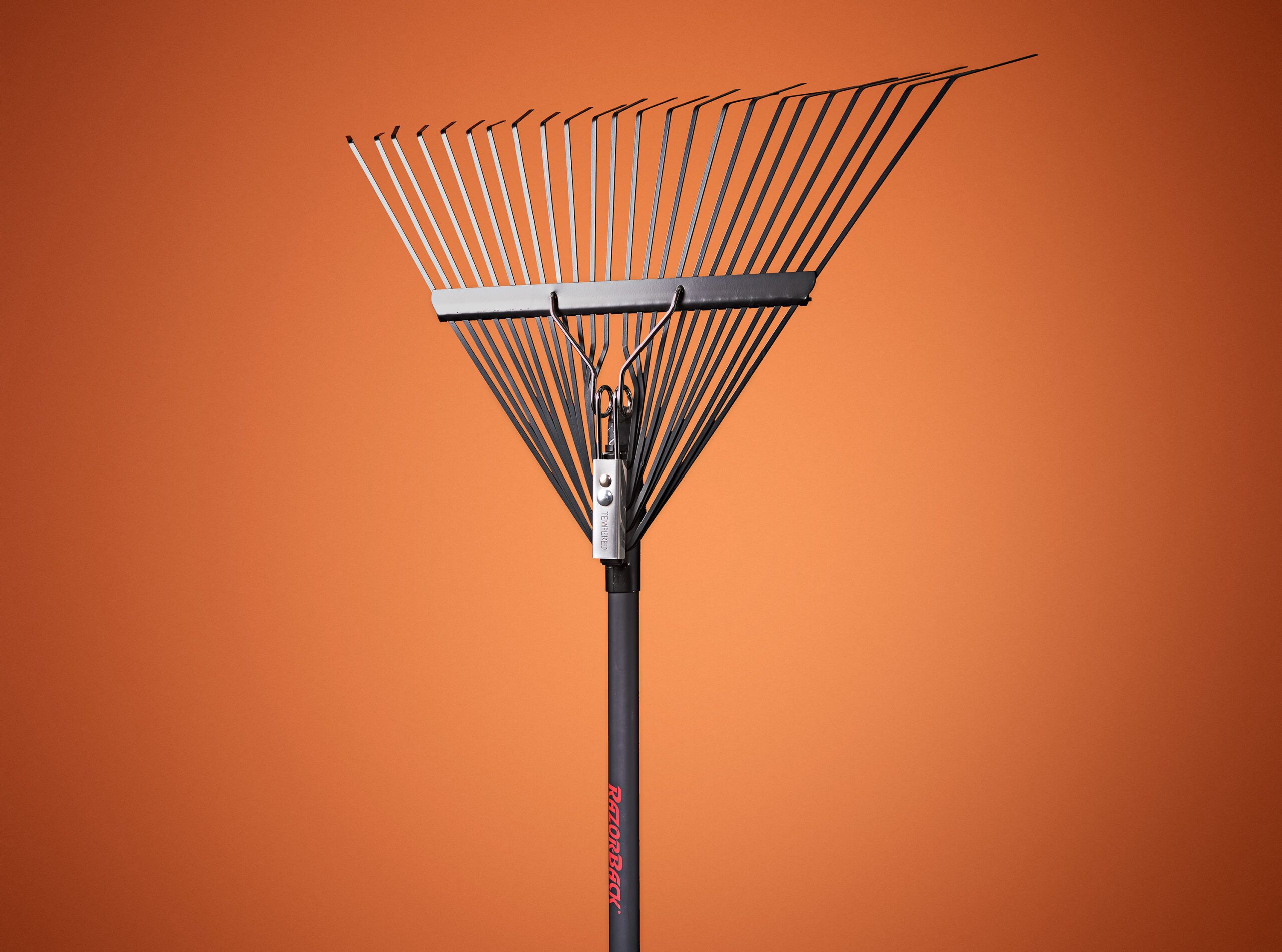The backstory
The first rakes have been traced back to 1100 B.C., when Chinese farmers used them to keep their fields tidy. Fast-forward some 3,000 years, to around 1880, and this agricultural implement had morphed into a fan-shaped tool designed to keep yards free of leaves. In 1926, the first metal leaf rake received a U.S. patent. That basic design remains the template for today’s versions, which benefit from better materials and improved engineering.

Shown: A spreader bar maintains the ideal 1-inch spacing between tines.
Specs to check
- TINES Powder-coated spring-steel tines are almost impossible to kink. And because these run from side to side, in one-piece sets of six, they can’t fall out.
- SPRING ACTION A coil spring stiffens the head, absorbs the bending stresses and shock loads on the tines, and helps flick debris away when tension is released.
- HANDLE This pro-quality rake has a fiberglass shaft, which is lighter and stronger than wood, can’t warp, and isn’t affected by weather. Hence the lifetime warranty.
What it’s best for
A metal fan rake is the optimal choice for clearing and renewing a lawn in fall, and again in spring, ridding it of leaves, thatch, and debris and preparing it for overseeding. Best to keep it out of garden beds, though, as the metal tines can snag perennials and damage the thin bark on shrubs.
How to move more leaves
- Grip the handle near the end with one hand, palm up; place your other hand about halfway down the handle, palm down.
- Keeping your back straight, reach out and across your body with your upper hand.
- Plant the rake head and press down, then sweep the rake in front of you, from one side to the other, like a broom.
- Push down with your lower hand through the end of the stroke. As the spring-loaded head lifts off the ground, it flings the leaves up and away from you.
Razor-Back 24-Tine Steel Rake, $20; Home Depot
Thanks to: Jeff Koenig, director of Long-Handled Tool Category, Ames
